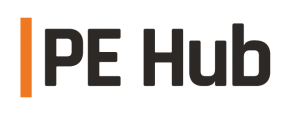The 2022 PE Playbook: How to survive the long-haul covid economy
When will the long-awaited recession – the one economists have been warning about for years – finally arrive?
When will the long-awaited recession – the one economists have been warning about for years – finally arrive?

We’re entering 2022 with COVID still looming, uncertainty around taxes, supply chain disruption, labor shortages, imbalances in trade policy, elevated inflation and rising interest rates. Whether we are truly headed into a sustained “normal” recession is difficult to predict, but we’re certainly headed into the long-haul COVID economy.
What does that mean for sponsors looking to mitigate risk in their portfolios? It means borrowing a chapter from turnaround management playbooks, by treating all portfolio investments as “stressed” companies. That playbook includes five focus areas that that can reduce stress and prevent distress.
Liquidity is essential to company viability, particularly in the short-term. Never has the saying “cash is king” been truer than in the long-haul COVID economy. Understanding liquidity needs means getting a realistic picture of the granular inflows and outflows of the business, as well as working capital. The pandemic has fundamentally altered that picture and will continue to do so. Gone are the days when historical trends could accurately predict current or future revenues, expenses, or cash requirements. Much like distressed companies, all companies must regularly forecast and monitor cash flow and use more sophisticated modeling techniques to understand business drivers. This approach will provide realistic expectations for liquidity needs and early warnings of any potential shortfalls while there is adequate time for remedial actions.
The required insight into liquidity places a much greater priority on forecast accuracy, in all its forms. There’s the forecasting needed to assess supply chain health and disruption. Does the company have suppliers that are at a greater risk of faltering and may impede its processes? Do inventory levels need to change as a result and how will that impact operational costs and liquidity? Then there’s the forecasting needed to assess labor costs and talent shortages. Many functional heads are eager to rebuild their teams, particularly in light of COVID headcount cuts. But to assume companies can or should rapidly return to pre-pandemic staffing levels could be a critical mistake. The Great Resignation has made it harder and more expensive to hire and onboard talent. Inflation is driving wages up. There’s more labor demand chasing less labor supply. Clear labor forecasting must become a fundamental practice to truly understand the ongoing employee cost profile. Finally, there’s the forecasting needed to assess pricing. The inflationary environment means that companies will have to be nimbler and more strategic in taking pricing actions (and aware of the pricing implications inherent in their spending commitments) – something that’s nearly impossible absent sophisticated forecasting capabilities.
As with distressed environments, companies navigating a dynamic and inflationary marketplace need increased visibility around strategic and non-strategic spend. The key here is understanding the drivers of spend and the broader organizational priorities. A zero-based budgeting approach to enterprise-wide spend can help inform the latter. Too often, spend is prioritized by divisional or functional goals. A CFO-led approach can filter priorities by organizational objectives rather than divisional ones, recognizing that a dollar spent in sales enablement, for example, will be twice as valuable as a dollar spent in marketing.
Technology plays many critical roles in navigating volatility and identifying market stressors. From a visibility perspective, technology is essential to quickly identifying underperformance variances and assessing their root causes. But technology can also play a bigger role than just informing. Technology itself can be a tool to combat the long-haul economy. CFOs can look to automation as a solution for high labor costs to mitigate shortages and facilitate information flow within a distributed workforce. That’s not only a near-term stop-gap, it’s a transformative long-term value creator.
Organizations in the long-haul economy must enhance and maintain liquidity – and that means they must measure. Even companies with significant liquidity runway must be disciplined about measuring cash flow and working capital given the inflationary environment and inherent volatility that businesses are facing today. That measurement starts with distressed company “101” – a 13-week cash flow forecast – but it needn’t end there. Given the importance of visibility, companies entering the 2022 economy should extend their exercises to 26 and 52 weeks and should ensure that forecasts not only reconcile to annual budgets and financial projections, but are continuously updated.
Thriving in, or even surviving, the long-haul economy will be no small feat. Sponsors can help portfolio company management navigate this complicated landscape by borrowing a page from the turnaround playbook. Though we have outlined them separately, the five focus areas all fall neatly under one headline: contingency planning. In 2022, contingency planning will be key, not just to navigating a crisis in private equity sponsors’ portfolios, but to proactively avoiding one.
When will the long-awaited recession – the one economists have been warning about for years – finally arrive?